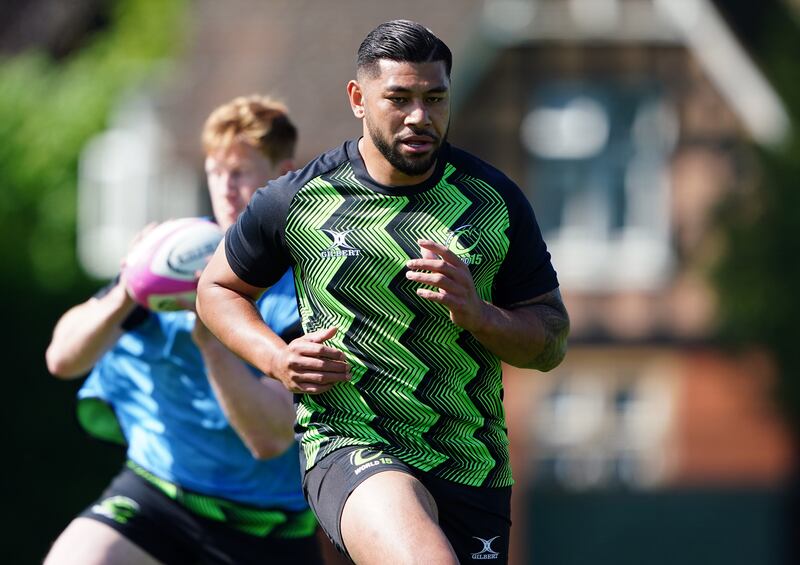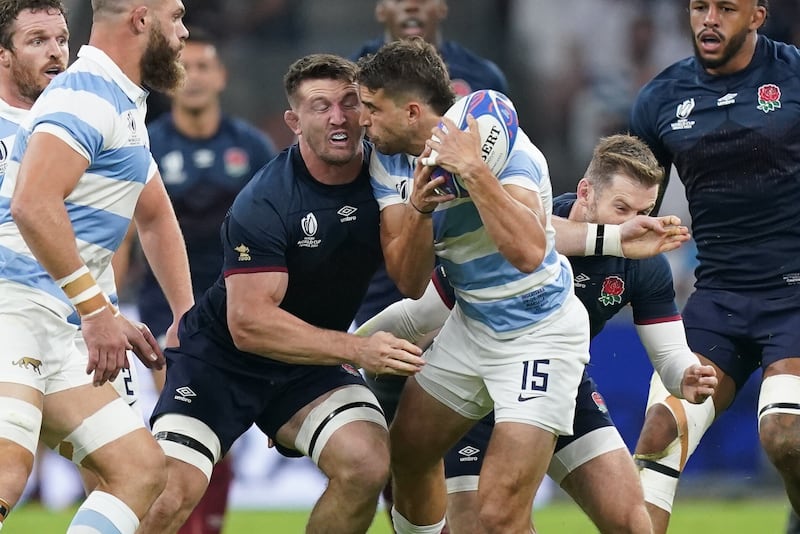Too many matches – and still not enough.
The Rugby World Cup has started strongly, with intriguing encounters between France and New Zealand, holders South Africa and Scotland, England and Argentina, and
[ Wales and Fiji.Opens in new window ]
I watched all of
[ Ireland-RomaniaOpens in new window ]
, of course, and bits of Australia-Georgia and Japan-Chile, but didn’t see a second of Italy-Namibia.
Unfortunately work commitments meant me missing all of Wales-Fiji, which turned out to be the classic many had anticipated – but that left me wanting more on Monday.
Nothing then, though.
Nor today, Tuesday.
Not even tomorrow, Wednesday.
Next up is France-Uruguay on Thursday. That would be ‘must-watch’ in soccer, but it’s a different story in rugby.
The oval ball code is growing, but it’s still far behind association football.
Not necessarily in terms of entertainment. Already we’ve had a higher return rate of matches worth watching than you would get from the first eight games at a football World Cup.
Yet with still only 20 teams participating in the rugby finals, it remains an awkward schedule.
The need to factor in recovery times between games is obvious, with literally bruising battles in almost every outing.
Still, there could be a more regular flow of games if more teams were involved. The number of participants hasn’t increased since the last century, in 1999, when it went up to 20 teams from 16 for its fourth iteration.
World Rugby needs to think seriously about making its next world cup, in Australia in 2027, a 24-team tournament.
But don’t do what soccer mostly did when it had 24-team world cups, and have six groups of four teams. In 1986, 1990, and 1994 that meant only eight teams dropping out after the group stage, leading to a round of 16.
The weird format in 1982, the first 24-team World Cup, sent 12 teams through to the second stage, which at least meant for a sensible initial group stage, with only the top two teams going through from each group. Those four three-team sections that followed were distinctly odd, though – with only the winners of those going through to semi-finals.
No, the best thing is to have quarter-finals, with the eight teams involved in those being the top two from four groups of six.
Given that the USA, Canada, Spain, and Brazil are all in the top 26 of the world rugby rankings, and all missed out on this tournament, there’s scope for far larger global interest if those countries were to reach an expanded event in Australia. If Russia is ever allowed in from the cold of international sporting exile, it’s currently ranked at 25th.
Sure, there would be more one-sided matches for the big guns – but there would also be some closer games for the lesser lights in each group.
More matches would also mean less downtime with no action, keeping the global television audience more involved.
Having an even number of teams in a group would also mean more fairness. No team would be sitting, anxiously twiddling their collective thumbs, while the other four sides in their group played, knowing exactly what they needed to qualify for the last eight.
Such a schedule would also prevent some teams having far longer rest and recovery periods than others ahead of the quarter-finals.
Obviously rugby needs to increase both its breadth and depth.
Only Argentina and to some extent Japan have really broken into the old boys’ club of the traditional big three southern hemisphere sides and the old Five Nations.
The main Pacific Island nations, Fiji, Samoa, and Tonga, have for too long boosted other countries.
Samoa hasn’t been in the last eight since its country’s Western days (in 1995), Fiji not since 2007 when they edged out Wales in a decisive group games thriller in Nantes. Tonga haven’t made the quarter-finals at all.
The alterations to eligibility made in 2021 should help strengthen those three sides.
For one thing, rugby’s residency requirement for those seeking to switch allegiance to another nation, is now a minimum of five years, rather than the ridiculous three years that it used to be, which might put off some who have headed to more profitable climes.
However, it’s a good thing that only three years is needed for a player to switch back to playing for the country of his birth.

These ‘birthright transfers’ have already brought back the likes of Malakai Fekitoa and Vaea Fifita to their native Tonga, along with New Zealand-born duo Charles Piutau and Augustine Pulu – all four of them former All Blacks -plus former Australia lock Adam Coleman, although his controversial former Wallabies colleague Israel Folau missed out due to injury.
Perhaps there should be a limit on how many foreign-born players can line out on any team, with concerns expressed that Samoa and Tonga in particular could have a host of players who actually hail from New Zealand but qualify through parentage or grand-parentage.
Yet the power and panache that Pacific Islanders, through birth of heritage, have proved for so many established nations should benefit themselves and help expand rugby’s worldwide appeal.

If we think (know) that VAR is bad in soccer, then TMO (television match official) in rugby is little better.
I may (do) mock my English mates on WhatsApp for complaining about England flanker
[ Tom CurryOpens in new window ]
being sent off for a head clash tackle while other similar incidents only merited yellow cards, or were completely ignored, such as South Africa’s Jesse Kriel clearly clashing his head with that of Scotland’s Jack Dempsey in the opening minute.
Yet the English have a point. For all the convoluted explanations, there seems little consistency in the decision-making.
Rugby has chosen a strange criterion of basing the punishment on ‘outcome’.
Surely a challenge is either dangerous or not dangerous? Legal or illegal?
Just because Dempsey was not damaged by Kriel’s challenge doesn’t mean it wasn’t dangerous and illegal.
Of course, the sooner rugby makes all tackles above the sternum illegal, the better.
Going back to the days when you were taught to tackle between hip and knee would be even more entertaining, but for now rugby needs to act swiftly and seriously to reduce the risk of head injuries and concussion.









